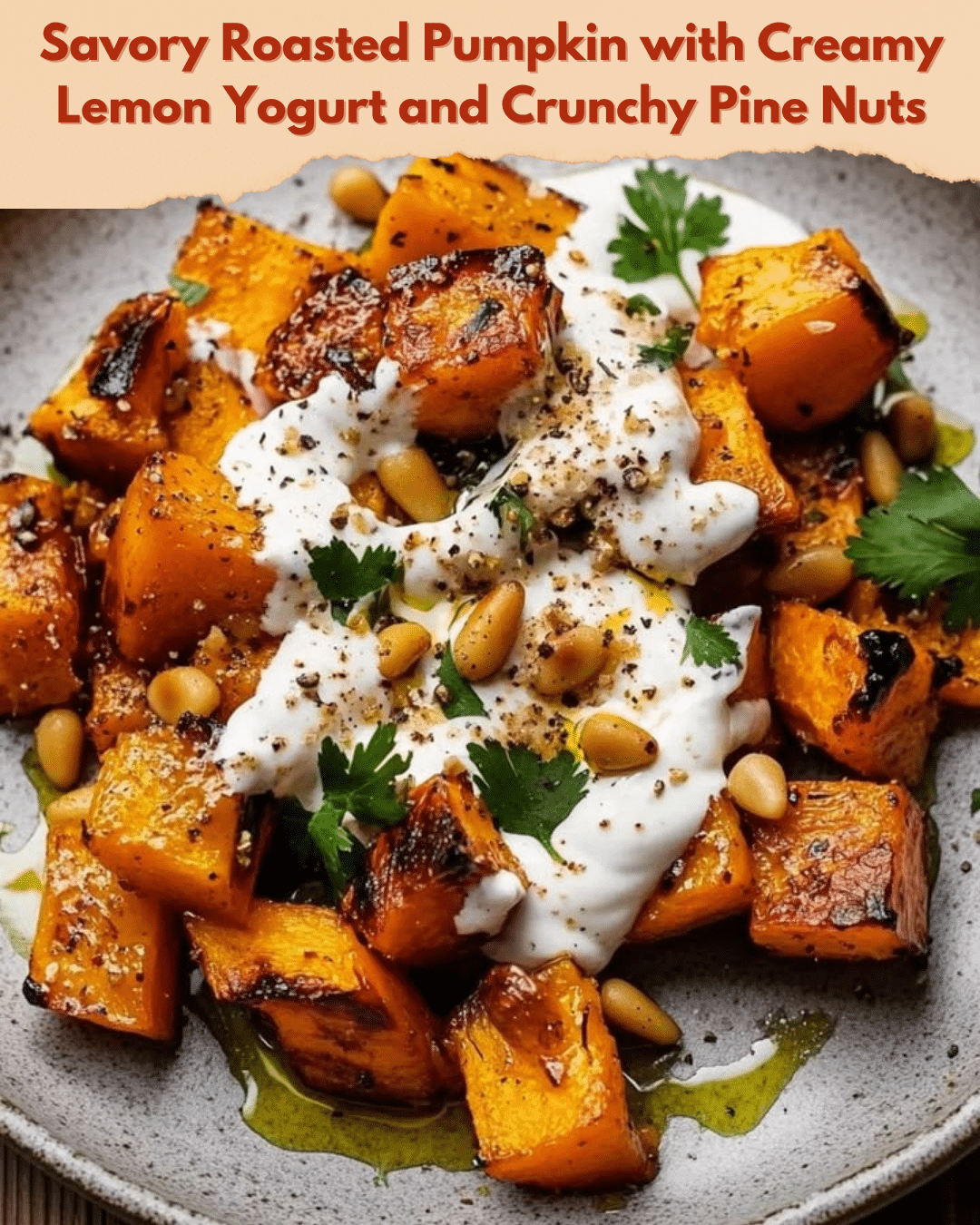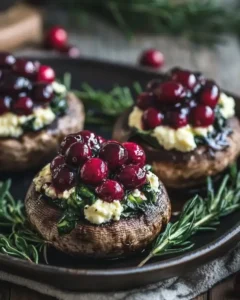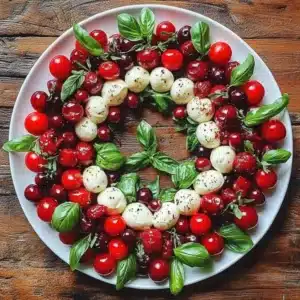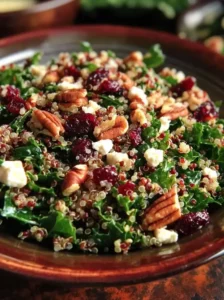Savory Roasted Pumpkin with Creamy Lemon Yogurt and Crunchy Pine Nuts: A Delightful Autumn Treat
Welcome to a world of seasonal flavors where savory roasted pumpkin meets the distinctive zest of creamy lemon yogurt, all topped with the delightful crunch of pine nuts. This recipe not only captures the essence of autumn in a dish but also provides a balanced fusion of textures and tastes. With its vibrant colors and aromatic profile, this roasted pumpkin recipe is set to become a staple for cozy dinners and festive gatherings alike.
Strong and bold, the savory roasted pumpkin pairs beautifully with the tangy lemon yogurt, providing a refreshing contrast that dances on your taste buds. The earthiness of the pine nuts elevates the dish, offering a satisfying crunch that accentuates the soft, caramelized pumpkin texture. Dive into this recipe for an unforgettable culinary experience that will leave everyone at your table asking for seconds.
Quick Recipe Highlights
Flavor Profile: This dish is a medley of savory, tangy, and slightly sweet notes. The roasting process caramelizes the pumpkin, bringing out its natural sugars, while the lemon yogurt adds a bright, tangy contrast.
Texture: Experience a balance of creamy and crunchy in every bite. The pumpkin is tender yet firm, the yogurt is silky smooth, and the pine nuts add a satisfying crunch.
Aroma: A warm, inviting fragrance fills the kitchen as the pumpkin roasts. The nutty scent of pine nuts complements the zesty aroma of lemon, creating an irresistible bouquet.
Visual Appeal: The vibrant orange of the pumpkin, contrasting with the white yogurt and golden brown pine nuts, makes for a visually stunning dish.
Skill Level Needed: This recipe is designed for cooks of all levels. Basic roasting and mixing skills are all that’s required to bring this dish together.
Special Equipment: You’ll need a baking sheet for roasting and a mixing bowl for the yogurt sauce. A food processor can help in toasting the pine nuts if you prefer.
Recipe Overview
Difficulty Level: With easy preparation steps, this dish is perfect for beginners. The main skills involved are roasting and assembling, making it accessible while providing impressive results.
Category: Savory roasted pumpkin falls under vegetarian main dishes and can also serve as a delightful appetizer.
Cuisine: Inspired by Mediterranean influences, this dish combines classic ingredients in a modern and refreshing way.
Cost: The recipe is budget-friendly, leveraging seasonal pumpkins and staple pantry ingredients like yogurt and lemon.
Season: Best enjoyed in autumn, when pumpkins are fully ripe and bursting with flavor, making it a fit for Thanksgiving or fall-themed celebrations.
Occasion: Ideal for family dinners, holiday feasts, and even as a sophisticated dish for entertaining guests.
Why You’ll Love This Recipe
Taste and texture appeal: Each bite offers a perfect harmony of sweetness from the roasted pumpkin and creaminess from the yogurt, with the added crunch of pine nuts enhancing the experience. The flavors meld together beautifully, leaving a lasting impression that’s both comforting and gourmet.
Convenience and preparation benefits: With simple steps and minimal equipment required, this dish comes together quickly, allowing you more time to spend with loved ones rather than in the kitchen. Roasting is a hands-off technique that develops deep, concentrated flavors effortlessly.
Nutritional advantages: Pumpkins are rich in essential vitamins and antioxidants, while yogurt adds protein and probiotics, making this dish not only delicious but nutritious. Pine nuts contribute healthy fats and essential minerals, rounding out the meal’s health profile.
Social and entertaining value: Impress your guests with a dish that looks as beautiful as it tastes. The vibrant presentation and unique flavor combinations make it a conversation starter at any gathering.
Cost-effectiveness and accessibility: Making use of in-season produce keeps the cost low, and the ingredients are readily available in most supermarkets, ensuring you can recreate this dish again and again without breaking the bank.
Historical Background and Cultural Significance
Origin story: Pumpkins have been cultivated for thousands of years, originating in the Americas and widely used by indigenous peoples for food and medicinal purposes. Their robust nature made them a staple in various cuisines over the centuries.
Cultural importance: Throughout history, pumpkins have been symbolic of harvest time and abundance. They’re a cornerstone of fall festivities and hold a special place in cultural traditions such as Halloween and Thanksgiving.
Evolution of the recipe: While roasted pumpkins were traditionally served simply, the addition of lemon yogurt and pine nuts reflects contemporary tastes and showcases cross-cultural influences. This evolution demonstrates how global flavors can elevate classic ingredients.
Regional variations: Variations arise based on local ingredients and culinary traditions. In some regions, roasted pumpkin may be paired with herbs like sage, while in others, spices like cumin are used to highlight different flavor profiles.
Ingredient Deep Dive
Pumpkin: With its rich history dating back to the native peoples of North and South America, the pumpkin is packed with fiber, vitamin A, and antioxidants. Choosing a bright orange, firm pumpkin ensures peak flavor. Store it in a cool, dry place, and if unavailable, butternut squash can be a suitable substitute.
Lemon Yogurt: Lemon adds a refreshing zing that brightens the dish, harmonizing with creamy yogurt to produce a sauce that balances the savory elements. For the best flavor, opt for fresh lemon juice and high-quality yogurt, and store in the refrigerator to maintain freshness. Coconut yogurt can replace traditional yogurt for a dairy-free option.
Pine Nuts: Known as a delicacy rich in healthy fats and minerals, pine nuts are integral to many Mediterranean dishes. Their distinct nutty flavor comes through best when lightly toasted. Keep them in the freezer to extend their shelf life and prevent rancidity. Substitute with toasted almonds for a different flavor twist.
Common Mistakes to Avoid
Using overly large pumpkins, which can be too watery and less flavorful.
Skipping the seasoning on the pumpkin, resulting in a bland taste.
Over-roasting or undercooking the pumpkin could affect texture.
Neglecting to toast the pine nuts, missing out on depth of flavor.
Using bottled lemon juice instead of fresh, which dulls the yogurt sauce.
Serving the dish immediately without letting it cool slightly for best flavor balance.
Using a thin yogurt that makes the dish soggy.
Forgetting to taste and season the yogurt before serving.
Essential Techniques
Roasting Pumpkins: The key to savory roasted pumpkin is achieving caramelization without overcooking. Roast at a high temperature for optimal browning while retaining a pleasing texture. Visual cues like golden-brown edges and fork-tenderness signal readiness.
Creating Creamy Yogurt Sauce: Achieve the perfect balance of tartness and creaminess by using full-fat yogurt and fresh lemon juice. Adjust sweetness and seasoning to taste, keeping it slightly thicker for better coating. Stir gently to maintain the yogurt’s texture.
Pro Tips for Perfect Savory Roasted Pumpkin
Choose sugar pumpkins or pie pumpkins for their sweetness and texture.
Season generously, ensuring every bite is infused with flavor.
Roast the pumpkins cut-side down for even cooking and caramelization.
Allow the dish to sit for a few minutes after assembling to deepen flavors.
If toasting nuts in a pan, flip frequently to avoid burning.
Garnish with fresh herbs like parsley for added freshness and color contrast.
Experiment with different seed oils to roast for varied taste depths.
Variations and Adaptations
Regional variations: Add spices such as cumin or paprika for a Middle Eastern twist, or incorporate spices like curry powder for an Indian-inspired variation.
Seasonal adaptations: Swap pumpkin for winter squash in colder months or use zucchini in spring for a lighter version.
Dietary modifications: Use coconut yogurt for a dairy-free recipe or omit nuts for a nut-free version.
Flavor variations: Introduce garlic to the yogurt sauce for deeper flavor, or incorporate feta cheese for a Mediterranean fusion.
Texture modifications: Include roasted chickpeas for added crunch or a drizzle of balsamic glaze for a saucy finish.
Presentation alternatives: Serve in an edible pumpkin bowl for a dramatic table setting or layer with arugula for a fresh salad interpretation.
Serving and Presentation Guide
Plating techniques: Arrange roasted pumpkin slices neatly on a platter and drizzle yogurt sauce artfully for a striking effect.
Garnishing ideas: Sprinkle with pomegranate seeds for a pop of color and added sweetness that complements pumpkin’s earthiness.
Traditional accompaniments: Serve alongside crusty bread and a crisp green salad to accentuate the dish’s flavors.
Modern serving suggestions: Incorporate quinoa or couscous for a complete meal grab-and-go bowl.
Temperature considerations: Serve slightly warm or at room temperature for optimal flavor enjoyment.
Portion control tips: Cut the pumpkin into individual serving sizes to aid plating and consumption.
Wine and Beverage Pairing
Wine pairings: A crisp white wine like Sauvignon Blanc pairs beautifully, complementing the yogurt’s tang and pumpkin’s sweetness.
Non-alcoholic alternatives: A sparkling water infused with citrus provides a refreshing match without overpowering the flavors.
Coffee/tea pairings if applicable: Light green tea with floral notes can enhance the earthy notes of the pumpkin and nuts.
Temperature considerations: Ensure wine and beverages are chilled to contrast the warm dish.
Serving suggestions: Present in elegant glassware to elevate the dining experience and host festivity.
Storage and Shelf Life
Storage methods: Place leftovers in an airtight container to preserve freshness and prevent drying out.
Temperature requirements: Store in the fridge and consume within three days to maintain taste integrity.
Container recommendations: Use glass or BPA-free options to ensure flavors aren’t compromised by storage materials.
Signs of spoilage: Discoloration, sour odors, or a slimy texture indicate the dish should be discarded.
Reheating instructions: Warm gently in an oven to avoid over-drying and maintain flavors.
Freezing guidelines: Pumpkin and yogurt don’t freeze well together; consume fresh for best results.
Make Ahead Strategies
Prep timeline: Pre-cut pumpkin and mix yogurt sauce up to a day prior to simplify day-of cooking.
Storage between steps: Keep components separate until assembly for fresher taste and texture.
Quality impact assessment: Preparing in advance won’t diminish flavors if stored correctly, enhancing convenience.
Assembly tips: Assemble right before serving to keep nuts crisp and yogurt sauce vibrant.
Reheating guidelines: Use low, even heat to stave off moisture loss and preserve flavor balance.
Fresh element additions: Add freshly toasted nuts and herbs at serving for maximum flavor impact.
Scaling Instructions
Halving the recipe: Use a smaller pumpkin and adjust seasoning for half the original yield, following the same steps.
Doubling or tripling: Ensure oven space and adjust roasting times if necessary to accommodate increased quantities.
Equipment adjustments: A larger baking sheet or multiple pans may be required for larger batches.
Timing modifications: Roasting times remain similar but monitor for guarantee of proper cooking.
Storage considerations: Factor in additional storage options and ensure consumption within safe refrigeration timelines.
Nutritional Deep Dive
Macro breakdown: High in carbohydrates from pumpkin, moderate protein from yogurt, and healthy fats from nuts.
Micronutrient analysis: Rich in vitamin A, calcium, magnesium, and potassium for balanced nutrition.
Health benefits: Supports immune function, bone health, and provides antioxidants.
Dietary considerations: Tailor to fit low-fat diets by selecting fat-free yogurt and minimizing oil.
Portion analysis: Nutritionally dense portions make it satisfying in moderation; a smaller serving can be balanced with supplementary dishes.
Weight management tips: Suitable as part of a reduced-calorie meal when combined with protein-rich sides.
Dietary Adaptations
Gluten-free: Naturally gluten-free but ensure sauces and dressings are checked for additives.
Dairy-free: Substitute with coconut or almond yogurt to suit dietary preferences without losing creamy elements.
Vegan: Replace yogurt with plant-based alternatives; garner seasoning for depth.
Low-carb: Reduce pumpkin portions and combine with leafy greens for fewer carbohydrates.
Keto: Focus on high-fat ingredients like pine nuts, and use Greek yogurt sparingly.
Paleo: Embrace whole foods, avoiding processed components to stay within paleo guidelines.
Low-FODMAP: Consider adjusting the amount of pumpkin to comply with dietary needs, and select appropriate yogurt brands.
Other specific diets: Adapt seasoning profiles and substitute ingredients accordingly to accommodate varied dietary preferences.
Troubleshooting Guide
Texture issues: Ensure pumpkin is cut evenly for uniform cooking, and monitor roasting times to avoid a mushy outcome.
Flavor balance: Adjust seasoning to taste; integrate an acidic component if overly sweet, or increase herbs for depth.
Temperature problems: Verify oven calibration and rotate pans for consistent roasting outcomes.
Equipment challenges: Check for adequate oven space to prevent crowding and uneven roasting.
Ingredient substitutions: Select equivalent alternatives preserving texture, moisture, and flavor regardless of changes.
Timing concerns: Prepare components ahead to mitigate last-minute delays and accommodate unforeseen culinary challenges.
Recipe Success Stories
Community feedback: Positive experiences highlight versatility and crowd-pleasing appeal across diverse gatherings.
Variation successes: Creatively swapping ingredients allows personalization while maintaining the core recipe’s integrity.
Adaptation stories: Readers have successfully incorporated vegetables and spices from conscientious dietary views.
Reader suggestions: Adding a drizzle of high-quality olive oil elevates flavor depth and visual presentation.
Photography tips: Capture vivid, natural lighting with suitable backdrops to showcase the dish’s vibrant appeal.
Frequently Asked Questions
What type of pumpkin is best? Use sugar or pie pumpkins for flavor and texture.
Can this be made vegan? Substitute plant-based yogurt for dairy varieties.
How long does it last? Consume within 3 days when refrigerated.
What’s an alternative for pine nuts? Almonds or walnuts offer alternative textures.
Is it suitable for keto diets? Small portions fit well when balanced with other low-carb foods.
Can I use another squash? Butternut or acorn squash are suitable replacements.
Should the yogurt be cold? Serve slightly cool; integrate smoothly with warm pumpkin.
Can this be frozen? Freezing isn’t recommended due to textural changes.
How do I prevent sogginess? Keep components separate until serving, and check yogurt consistency.
Can I make it ahead? Pre-chop and prep ahead, and unify promptly before eating.
Additional Resources
Related recipes: Explore variations in roasted vegetables for added inspiration and complementing dishes.
Technique guides: Seek detailed tips on effective roasting and plating for professional results in home kitchens.
Ingredient information: Delve into detailed analyses about seasonal produce and maximizing freshness.
Equipment recommendations: Invest in quality baking sheets and mixing implements to ensure ease of cooking and success.
Seasonal variations: Adaptation ideas to infuse seasonal ingredients and incorporate fresh produce to enhance culinary creativity.
Print
Savory Roasted Pumpkin with Creamy Lemon Yogurt and Crunchy Pine Nuts
Description
A delightful autumn dish featuring roasted pumpkin paired with a zesty lemon yogurt and garnished with toasted pine nuts for added crunch.
Ingredients
For the Crust:
- 1 small pumpkin, peeled and cubed
- 2 tablespoons olive oil
- Salt and pepper to taste
- 1 cup plain yogurt
- 1 lemon, juiced
- 2 tablespoons pine nuts
- 1 tablespoon fresh parsley, chopped
Instructions
1. Prepare the Crust:
- Preheat your oven to 400°F (200°C). In a large bowl, toss pumpkin cubes with olive oil, salt, and pepper. Spread evenly on a baking sheet.
- Roast the pumpkin in the preheated oven for 25-30 minutes, or until golden and tender, turning once halfway through.
- While the pumpkin is roasting, mix the yogurt with lemon juice in a bowl and set aside. In a dry skillet, toast the pine nuts over medium heat until golden, stirring frequently.
- To assemble, place roasted pumpkin on a serving dish, drizzle with the lemon yogurt sauce, sprinkle toasted pine nuts on top, and garnish with fresh parsley.
Notes
You can customize the seasonings to taste.





